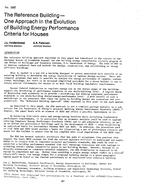Click here to purchase
An important measure for climate change mitigation is reduction of energy use in buildings worldwide. To decrease the energy use of a building in a Nordic climate, increased thermal resistance of the building envelope is a suitable measure. Adding more insulation in combination with climate change may increase the risk of mould growth within the building envelope. This study evaluates hygrothermal conditions for three different wood frame wall assemblies and four different locations in Sweden. The evaluation is based on simulations where the exterior climate is based on a climate scenario from the Swedish Meteorological and Hydrological Institute. The evaluation of the climate scenarios show a trend of increased precipitation and temperature. Examining the hygrothermal conditions; all evaluations models indicate an increased risk of mould growth over time due to climate change. Adding more insulation to a building envelope will decrease the dehydration of built-in moisture. However, adding more insulation to the exterior side of a wood frame construction results into more stabile hygrothermal conditions. Based on the results from the simulations it is recommended that all constructions with bio gradable materials should be given exterior insulation to decrease the risk of mould growth. Furthermore, building elements must always be designed to have the ability to dehydrate moisture that has entered, whether it is due to driving rain, built in moisture or other reasons.
Citation: Cold Climate Conference, 2012
Product Details
- Published:
- 2012
- Number of Pages:
- 9
- File Size:
- 1 file , 870 KB
- Product Code(s):
- D-CCC12-3


